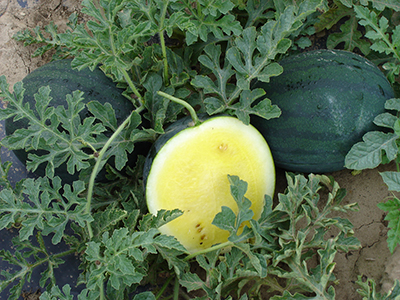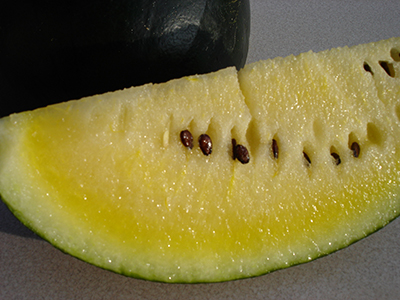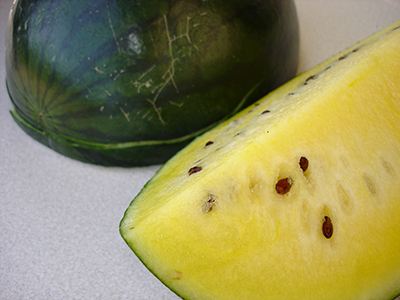Citrullus lanatus (Thumb.) Matsum. et Nakai (Cucurbitaceae) cv. Janosik



| ENG | Watermelon |
| SK | Dyna cervena |
| CZ | |
| PL | Arbuz zwyczajny |
| HU |
Using
Water melon is commonly cultivated for fruit which has a sweet, pulpy flesh. Fruit is comprised mainly of water (often over 90%), but it also contains important nutritional compounds, including sugars, minerals, lycopene, and amino acids. The rind contains i.a. alkaloids, saponins, and flavonoids. The seed oil is composed i.a. with glycosides of linoleic, oleic, palmitic, and stearic acids. These compounds are a biochemical background of traditional use of watermelon rind as purgative, emetic, vermifuge, demulcent, diuretic, and tonic. The seeds are used in the treatment of urinary tract infections, dropsy and renal stones, hypertension, diabetic, diarrhea, and gonorrhoea.
| I. | II. | III. | IV. | V. | VI. | VII. | VIII. | IX. | X. | XI. | XII. | |||||||||||||
| Sowing | ||||||||||||||||||||||||
| Planting | ||||||||||||||||||||||||
| Harvest | ||||||||||||||||||||||||
Botanical description and occurrence:
Watermelon is native to Southern Africa where it had been cultivated in for over 4,000 years. Plant is annual, prostrate or climbing, with several herbaceous stems up to 3 m long. The young parts are covered by hairs. The leaves are usually deeply 3-lobed with the segments also lobed. The plant is monoecious, flowers are yellow. The fruit is usually globose to oblong or ellipsoid, sometimes ovoid, 5–70 cm long. The seeds are obovate, smooth, yellow to brown or black. ‘Janosik’ is a cultivar well suited to temperate climate because of toleration to cold weather. Fruit is elliptic to round shape, weighing 3.5-5.5 kg, with thin, dark green rind. The flesh is yellow, very juicy, sweet, compact, with a small amount of seeds.
Why to have the plant in your garden:
The watermelon ‘Janosik’ provides tasty, refreshing fruits of unusual colour. The most common way watermelon is the consumption of raw, yellow flesh. However, this cultivar will be interesting colouristic accent in fruit salads, rind pickles, smoothes, sorbets, or granite.
Text:
Dr. Agnieszka Sekara, University of Agriculture in Krakow, Poland
Photo:
Dr. Agnieszka Sekara, University of Agriculture in Krakow, Poland

